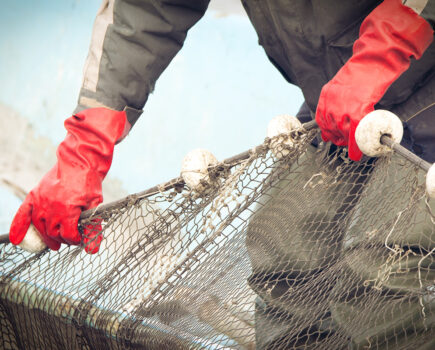Read the open letter from Warsash Inshore Fishermen’s Group here.
To the Editor,
I am writing in response to the open letter published on your website on 7 March 2017 from the Warsash Inshore Fisherman’s Group.
Moon’s law suggests that the reaction to the engagement of a woman into a world men feel is their special domain of expertise and understanding is in inverse proportion to the response given to a male engagement into the same domain. It is the only way I can explain the somewhat hysterical reaction of the Warsash fishermen to my comments on Bass fishing.
Let me be clear. I am not a fisherman/ woman, I am simply an MP representing the large number of recreational anglers in my Bridgend constituency. I have no axe to grind except theirs, which is what an MP does.
Taking each of the points raised in the Group’s letter;
With regards gill netting, published references that draw attention to the increased pressure on stocks from the use of mono gill nets are far too numerous to list here, but below are a small selection with sources which demonstrated that concerns are not limited to recreational anglers.
“Other technological advances were made in fishing nets, especially cheap monofilament gill nets that almost anyone could afford. They are made of a near invisible mesh that traps fish behind their gills when they swim into the net. As these nets cost just a few dollars, their use spread around the world.” – Page 6. “Overfishing” Oxford University Press, Author: Professor Ray Kilborn.
“Pressure on all local fish stocks is considerable particularly on demersal finfish since the development of gill netting in the region.” – Page 23. seafish.org/media/Publications/CR16.pdf
“The first effect of the new materials was to provide fishing opportunities that were not available to those using traditional gear. For example, gill nets could be set on rough ground, which had once been fished by long-lines but could not be fished by trawlers, and drift nets could be used successfully in daylight, giving netsmen more freedom to choose the timing and duration of their fishing trips. The second effect was to attract new, often inexperienced or part time, netsmen into the fisheries, and thus increase exploitation levels on certain stocks.
“The lower visibility of synthetic materials in the water, compared with twines of natural fibre, is probably largely responsible for the greater effectiveness of modern gill nets.
“Monofilament nets are thought to be more effective than multifilament nets, principally because they are less visible in the water.
“Synthetic gill nets have proved effective in catching a wide range of species, but one of their major advantages has been to enable fishing in areas where trawling is not possible. Many demersal fish tend to aggregate around features such as wrecks, rocky outcrops and shallow sand banks; gill nets can be fished very close to or even right over such features, enabling them to catch fish that are virtually inaccessible to trawls. Although the gear is frequently damaged, the cost of replacement is relatively low. Another advantage of gill nets is that they can be set and left to fish by themselves while the boat is being used to set or haul more nets, thus increasing the catching capacity of even small boats quite considerably.” – Extracts from MAFF laboratory leaflet number 69 (1991)—Gillnetting
“Gillnet bycatch – the sleeping giant of seabird threats – must now be tackled with the utmost urgency.” – Global Review of Seabird bycatch in gill-nets, Birdlife Internatinal.
Long-lining. This method cannot compete with the catching power of nets, particularly on dogfish shoals, and, when able, owners are changing to gill netting.
1983 began exceptionally well, with Newlyn based netters making very heavy landings of dogfish (Spurdogs). By the end of the first week of January daily landings had peaked to 60 tonnes. By this time the fleet had more than doubled, resulting in several days landings exceeding 60 tonnes. owners are changing to gill netting.
Early in March, the dogfish shoals finally dispersed but fine weather allowed netters to change to wreck fishing. Hauls of ling & pollack often reached 5 tonnes. Offshore wrecks produced catches in excess of 9 tonnes. – Extracts from: 1983 Report by Chief Fisheries Officer to Cornwall Sea Fisheries Committee.








